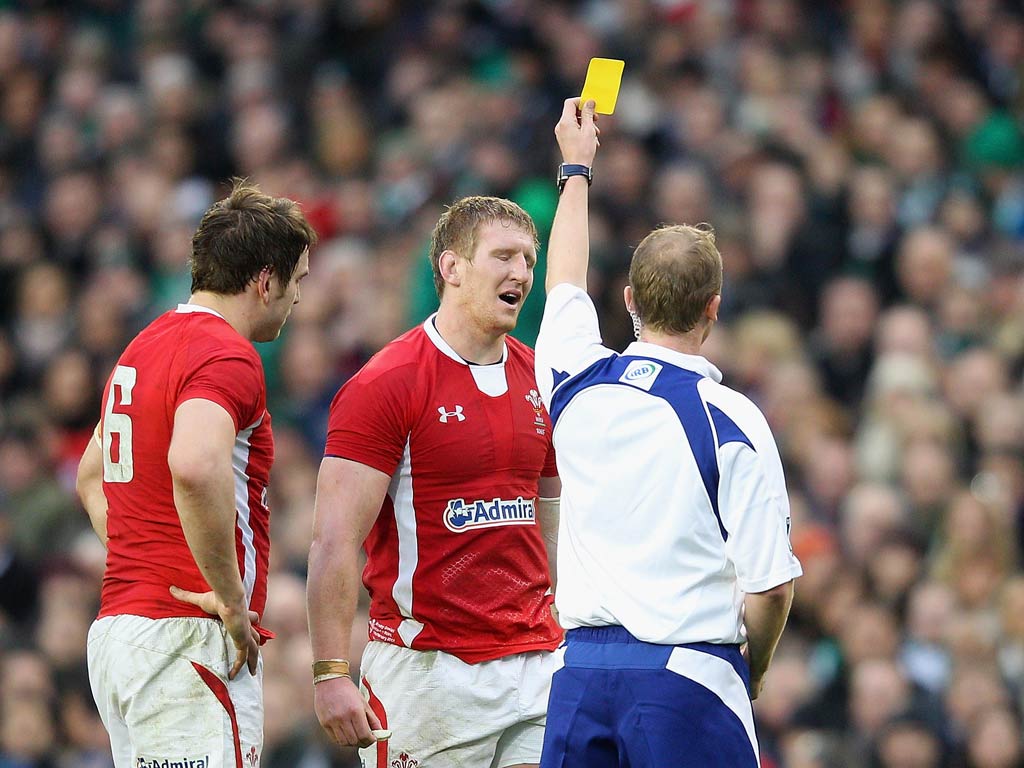Chris Hewett: The IRB must also take blame for putting players in peril
Thanks to the rule changes, most tackles at rucks are now made higher on the body

So Bradley Davies will miss the rest of the Six Nations Championship. Serves him right. If the Welshman cannot accurately be said to have "tackled" the Irish forward Donnacha Ryan in any form, legal or otherwise, last weekend – Ryan was nowhere near the ball at the time – there were so many things wrong with what he did do that it is difficult to know where to start. Suffice to say it was a deliberate act of retribution that might easily have put the victim in a hospital bed. The International Rugby Board is entirely justified in insisting that strong action be taken in this area. But the IRB is also wrong.
Why did Davies go after Ryan? Because the Irishman had smashed the Wales prop Adam Jones in the back with a cheap-shot charge at a ruck – a charge that brought back dark memories of events in Pretoria in 2009, when Jones was smithereened out of the Lions tour by the Springbok lock Bakkies Botha. On that occasion, the unsuspecting victim was hit at considerable velocity while crouched in a static "guard" position at the tackle area. The only differences on Sunday were that Ryan was not horizontal when he made contact, and Jones did not leave the stadium in an ambulance.
Players place themselves in dangerous positions at the sides of rucks because the IRB has outlawed boots on bodies and made it next to impossible to contest possession at the breakdown by binding together, staying on the feet and moving past the ball in numbers.
This stupidity, driven by a desire to sanitise the sport for the benefit of the mass television audience, has had all manner of negative consequences: the game is frequently slower than it should be; space has been reduced by a dramatic degree; forwards routinely hang around in midfield, cluttering up back-line moves when they should be mixing it with their fellow piano-shifters and leaving the piano-playing to those who can read music.
Above all, it has put people in peril. When the old-style ruck was legal, players tackled their opponents round the legs and brought them to the floor, secure in the knowledge that this would be sufficient if their forwards were quicker than the opposition. There was no technical or tactical requirement to hold them up or send them careering backwards, still less lift them.
Now, most tackles are made higher on the body, with the aim of dislodging the ball or preventing the offload. It is a style derived from rugby league – a game in which there is no contest for possession on the floor (or, indeed, anywhere). As rugby league demonstrated years ago, it is a very short step from driving an opponent upwards to sending him crashing to the deck, head-first.
The Davies case is unusual, in that Ryan was not in possession. For this reason alone, the perpetrator could not have expected a sympathetic hearing from the disciplinary tribunal. But had changes to the laws not removed the dynamic that made fast, attacking rugby possible, Ryan might not have caused the flare-up in the first place.
Everything connects in the union game. If Ryan provoked Davies by clattering Jones in the way he did, some of those sharing the responsibility were watching from the stand, in their suits and IRB ties.
Join our commenting forum
Join thought-provoking conversations, follow other Independent readers and see their replies
Comments